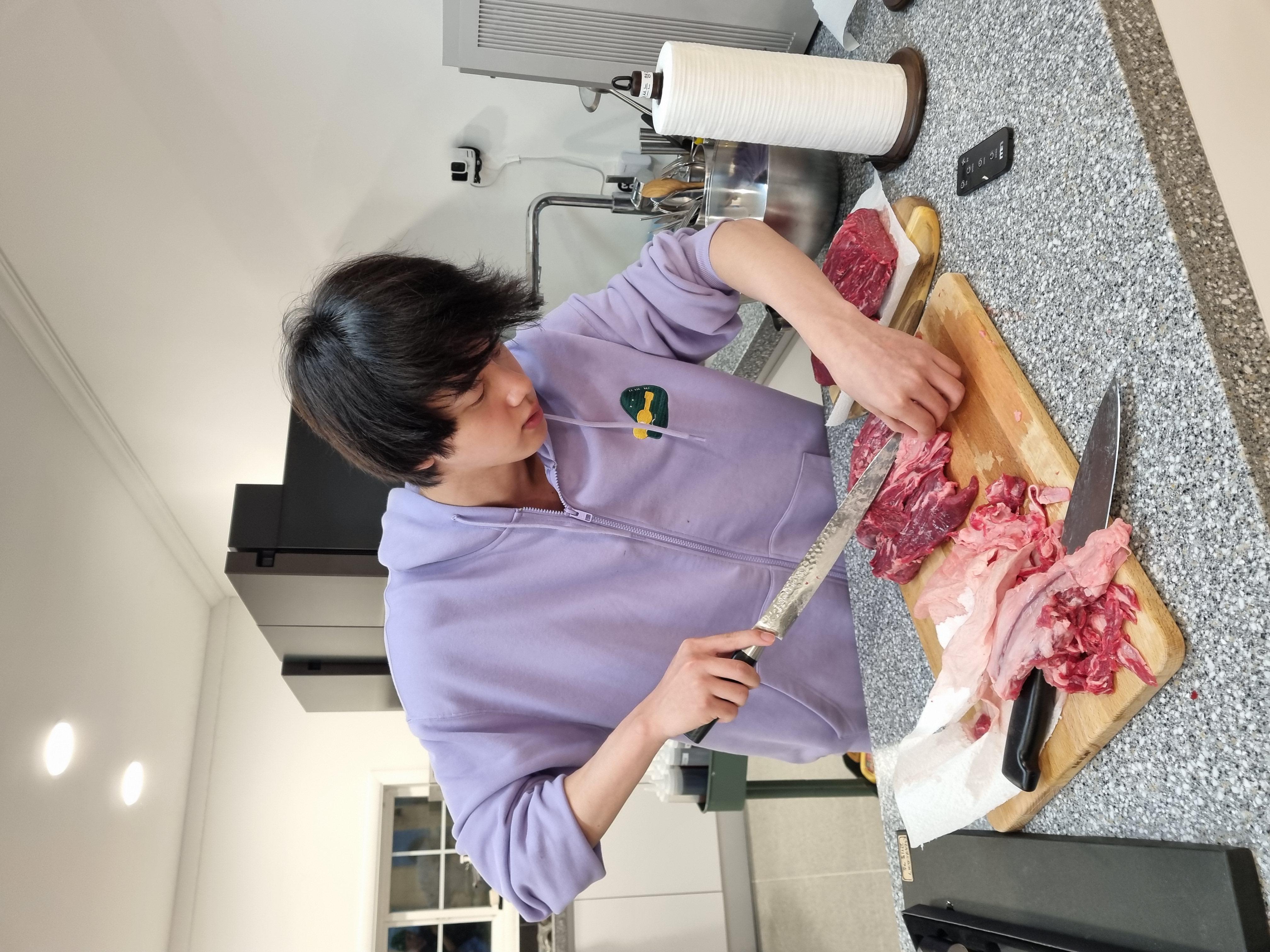Hey there food lovers! Are you ready to dive into the vibrant world of Middle Eastern cuisine? Today we're talking about Shawarma and Falafel—two absolute game-changers in the food universe. If you haven't tried them yet, trust me, you're missing out on something truly magical. These dishes are more than just food; they're a cultural experience that will leave your taste buds dancing and your stomach super satisfied.
Now, I know what you're thinking—"What's so special about Shawarma and Falafel?" Well, let me tell you, these aren't your average street foods. They're a celebration of flavors, textures, and aromas that have been perfected over centuries. From the tender, marinated meats of Shawarma to the crispy, protein-packed goodness of Falafel, there's a reason why these dishes are loved worldwide.
But it's not just about the taste. Shawarma and Falafel are also incredibly versatile. You can enjoy them in wraps, salads, bowls, or even as a standalone snack. They're perfect for anyone looking for a quick, healthy, and delicious meal. So, buckle up because we're about to take you on a culinary adventure you won't forget!
- How To Craft Heartfelt Thank You Messages For Retirement Gifts
- Confident Captions For Instagram Boost Your Game And Captivate Your Audience
Before we jump into the nitty-gritty, let's explore the origins of these amazing dishes. Understanding where they come from and how they've evolved will give you a deeper appreciation for their unique flavors and significance in Middle Eastern culture. And who knows? By the end of this article, you might just find yourself craving your next Shawarma or Falafel fix!
Table of Contents
- The Rich History of Shawarma and Falafel
- Key Ingredients That Make Them Irresistible
- How They're Prepared: Step by Step
- Nutritional Value and Health Benefits
- Regional Variations and Unique Twists
- Why They're So Popular Globally
- DIY Recipes You Can Try at Home
- Best Pairings and Side Dishes
- Cultural Significance and Traditions
- The Future of Shawarma and Falafel
The Rich History of Shawarma and Falafel
Let's rewind the clock and take a trip back to the birthplace of Shawarma and Falafel. These iconic dishes have roots that go way back in time. Shawarma, with its origins in the Ottoman Empire, was originally made by skewering and roasting meat on a vertical spit. This method of cooking was revolutionary and allowed for large quantities of meat to be cooked evenly and efficiently.
On the other hand, Falafel's history is a bit more mysterious. Some say it dates back to ancient Egypt, where it was made using fava beans. Over time, chickpeas became the preferred ingredient in many regions, especially in the Levant. Regardless of its exact origin, Falafel has become a staple in Middle Eastern cuisine and is loved by millions around the globe.
- A Heartfelt Message To My Crush About My Feelings
- Why Did Pastor Charles Stanley Get Divorced Unveiling The Truth Behind The Controversy
Both Shawarma and Falafel have evolved over the years, influenced by various cultures and culinary traditions. Today, they're enjoyed in countless variations, each with its own unique twist. But no matter how they're prepared, their core essence remains the same—delicious, flavorful, and utterly satisfying.
Origins of Shawarma
Shawarma's journey began in the bustling markets of the Ottoman Empire. Merchants and travelers would gather around these massive rotating spits, watching as the meat was slowly cooked to perfection. The aroma of spices and roasting meat filled the air, drawing people in like moths to a flame. Over time, different regions began adding their own special touches, creating the diverse array of Shawarma styles we see today.
Falafel: A Bean-Based Wonder
Falafel's story is one of simplicity and ingenuity. Made from ground chickpeas or fava beans, mixed with herbs and spices, and deep-fried to crispy perfection, Falafel is a testament to the creativity of Middle Eastern cooks. It's a dish that can be enjoyed by everyone, regardless of dietary restrictions, making it a true universal favorite.
Key Ingredients That Make Them Irresistible
So, what exactly makes Shawarma and Falafel so irresistible? It all comes down to the ingredients. For Shawarma, it's all about the meat—usually chicken, beef, or lamb—that's marinated in a blend of spices like cumin, paprika, turmeric, and garlic. This marinade not only enhances the flavor but also tenderizes the meat, making it fall-off-the-bone delicious.
When it comes to Falafel, the magic happens in the mix. Ground chickpeas or fava beans are combined with fresh parsley, cilantro, onions, garlic, and a variety of spices. This mixture is then formed into small balls or patties and deep-fried until golden brown. The result? A crispy, flavorful bite that's packed with protein and nutrients.
- Spices: Cumin, coriander, turmeric, and more
- Proteins: Chicken, beef, lamb for Shawarma; chickpeas or fava beans for Falafel
- Herbs: Fresh parsley, cilantro, and mint
- Vegetables: Onions, garlic, and bell peppers
And let's not forget the tahini sauce! This creamy, nutty sauce is the perfect complement to both Shawarma and Falafel, adding a rich and tangy flavor that ties everything together.
How They're Prepared: Step by Step
Now that we know what goes into Shawarma and Falafel, let's talk about how they're prepared. The process is both an art and a science, requiring patience and precision to get it just right.
Preparing Shawarma
First, the meat is marinated for several hours—or even overnight—to allow the flavors to fully develop. Then, it's carefully placed on a vertical spit and slowly roasted over an open flame. As the outer layer of meat cooks, it's shaved off in thin slices, revealing the perfectly cooked meat beneath. This method ensures that every bite is juicy and flavorful.
Making Falafel
Falafel, on the other hand, is all about the prep work. The chickpeas or fava beans are soaked overnight to soften them, then blended with fresh herbs and spices. The mixture is then formed into small balls or patties and deep-fried until golden brown. The result is a crispy exterior with a soft, flavorful interior that's simply irresistible.
Both dishes require attention to detail and a bit of practice to master, but once you get the hang of it, you'll be making Shawarma and Falafel like a pro in no time!
Nutritional Value and Health Benefits
Shawarma and Falafel aren't just delicious; they're also packed with nutrients that can benefit your health. Shawarma, especially when made with lean meats like chicken or turkey, is a great source of protein and essential vitamins and minerals. The spices used in the marinade also have antioxidant properties that can boost your immune system.
Falafel, being plant-based, is a fantastic option for vegetarians and vegans. It's high in protein, fiber, and healthy fats, making it a filling and nutritious meal option. Plus, the tahini sauce adds a boost of calcium and magnesium, which are important for bone health.
Of course, moderation is key. While Shawarma and Falafel are healthy choices, they can be high in calories if overindulged. So, enjoy them in moderation and pair them with plenty of fresh veggies for a balanced meal.
Regional Variations and Unique Twists
One of the coolest things about Shawarma and Falafel is how they vary from region to region. In some places, you'll find Shawarma made with lamb or goat, while in others, chicken or turkey is the go-to choice. The marinades and spices used can also differ, giving each dish its own unique flavor profile.
Falafel, too, has its own regional variations. In Egypt, it's often made with fava beans instead of chickpeas, while in Israel and Palestine, chickpeas are the preferred ingredient. Some regions add extra spices or herbs to their mix, while others keep it simple and let the beans shine.
And then there are the unique twists that chefs around the world are putting on these classic dishes. From adding unexpected ingredients like coconut or curry to experimenting with different cooking methods, the possibilities are endless. So, whether you're a traditionalist or an adventurous eater, there's a Shawarma or Falafel variation out there for everyone!
Why They're So Popular Globally
It's no surprise that Shawarma and Falafel have become global sensations. Their combination of bold flavors, versatility, and affordability makes them a hit with food lovers everywhere. Plus, they're incredibly convenient—perfect for a quick lunch on the go or a casual dinner with friends.
But their popularity goes beyond just taste. Shawarma and Falafel also represent a connection to Middle Eastern culture and heritage. They're a way for people to experience the flavors and traditions of the region, even if they've never been there. And in today's increasingly connected world, that cultural exchange is more important than ever.
So, whether you're enjoying a Shawarma wrap at your local food truck or trying your hand at making Falafel at home, you're participating in a global culinary phenomenon that's bringing people together through the universal language of food.
DIY Recipes You Can Try at Home
Ready to try your hand at making Shawarma and Falafel at home? Here are two simple recipes to get you started:
Chicken Shawarma Recipe
Ingredients:
- 1 lb chicken breast, sliced thinly
- 2 tbsp olive oil
- 2 tbsp lemon juice
- 1 tbsp paprika
- 1 tsp cumin
- 1 tsp turmeric
- 2 cloves garlic, minced
- Salt and pepper to taste
Instructions:
- Mix all the marinade ingredients in a bowl.
- Add the chicken slices and let them marinate for at least 2 hours.
- Heat a grill or skillet over medium-high heat.
- Cook the chicken until fully cooked and golden brown.
- Serve in a wrap with your favorite veggies and tahini sauce.
Falafel Recipe
Ingredients:
- 1 can chickpeas, drained and rinsed
- 1 small onion, chopped
- 2 cloves garlic, minced
- 1/4 cup fresh parsley, chopped
- 1/4 cup fresh cilantro, chopped
- 1 tsp cumin
- 1 tsp coriander
- 1 tsp baking powder
- Salt and pepper to taste
- Vegetable oil for frying
Instructions:
- Blend all the ingredients in a food processor until well combined but not too smooth.
- Form the mixture into small balls or patties.
- Heat the oil in a skillet over medium heat.
- Fry the Falafel until golden brown on all sides.
- Drain on paper towels and serve in a wrap with veggies and tahini sauce.
Best Pairings and Side Dishes
No Shawarma or Falafel meal is complete without the right pairings and side dishes. Here are some of our top picks:
- Hummus: A creamy, flavorful dip that pairs perfectly with both dishes.
- Tabbouleh: A fresh salad made with parsley, tomatoes, cucumbers, and bulgur.
- Baba Ghanoush: A smoky eggplant dip that adds a rich, earthy flavor.
- Pita Bread: Soft, warm pita is the perfect vehicle for wrapping up your Shawarma or Falafel.
- Fresh Veggies: Add some crunch with lettuce,



Detail Author:
- Name : Dr. Sylvan Schmitt III
- Username : yessenia87
- Email : clemens.conn@funk.com
- Birthdate : 1994-03-29
- Address : 17564 Wellington Squares Hiltontown, SC 99768-9092
- Phone : (606) 949-6744
- Company : Schamberger and Sons
- Job : Barber
- Bio : Molestiae unde laboriosam quis odit dolores voluptas. Neque et quis reiciendis cupiditate eligendi dolores numquam. Officia sed rem reiciendis ut quia a.
Socials
facebook:
- url : https://facebook.com/celia_real
- username : celia_real
- bio : Molestiae iste eaque aut quas aut. Ut enim corrupti aut non at.
- followers : 2168
- following : 2245
twitter:
- url : https://twitter.com/celia620
- username : celia620
- bio : Accusamus quia illo est aspernatur soluta repellat. Illum sunt laboriosam soluta ipsum id nam repellendus.
- followers : 4347
- following : 2583